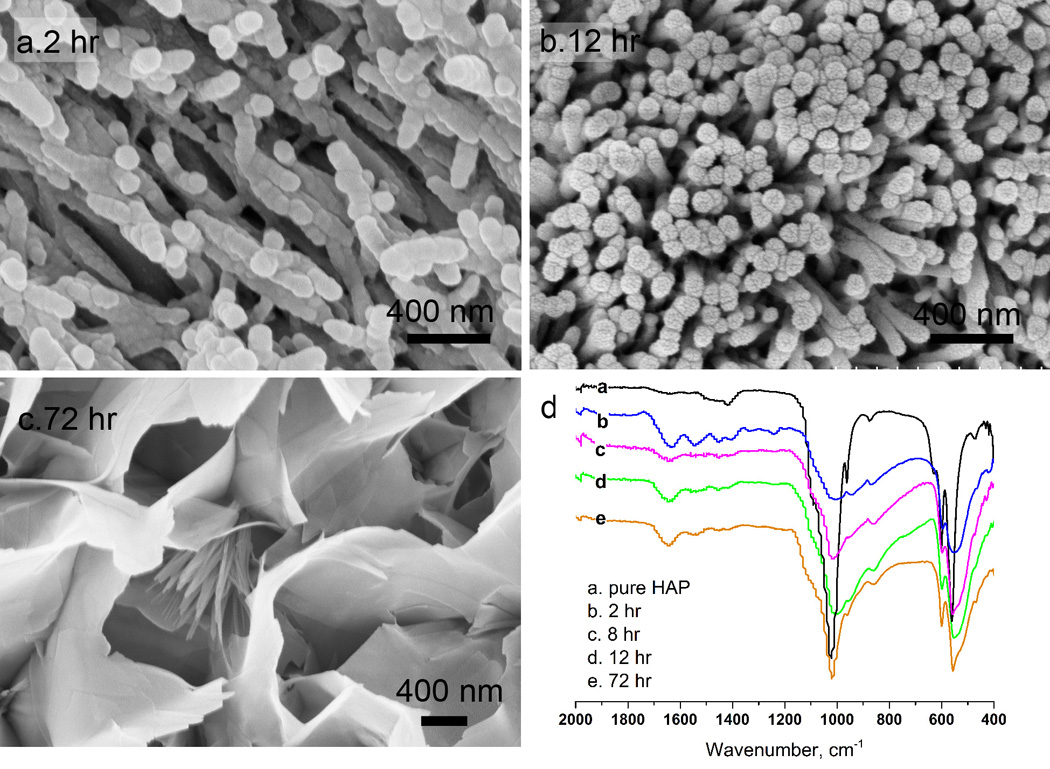 Dental enamel is the hardest tissue in human being. Dental caries (tooth decay) is a major infectious disease worldwide. Enamel regeneration due to amelogenesis imperfect or dental caries is a big challenge for dentist and biomaterial scientist. Since natural enamel is highly organized hierarchical materials, the formation of organized nanocrystals that resemble enamel is crucial for successful enamel remineralization. Calcium, phosphate, fluoride ions and amelogenin are important ingredients for the formation of organized hydroxyapatite (HAP) crystals in in vitro biomineralization ( Biomaterials 2009;30:478-83 ). Enamel-like densely-packed arrays of fluoridated hydroxyapatite nanorods were observed in certain conditions in initial equilibrated solution ( Acta Biomater 2011;7:2293-2302).
Dental enamel is the hardest tissue in human being. Dental caries (tooth decay) is a major infectious disease worldwide. Enamel regeneration due to amelogenesis imperfect or dental caries is a big challenge for dentist and biomaterial scientist. Since natural enamel is highly organized hierarchical materials, the formation of organized nanocrystals that resemble enamel is crucial for successful enamel remineralization. Calcium, phosphate, fluoride ions and amelogenin are important ingredients for the formation of organized hydroxyapatite (HAP) crystals in in vitro biomineralization ( Biomaterials 2009;30:478-83 ). Enamel-like densely-packed arrays of fluoridated hydroxyapatite nanorods were observed in certain conditions in initial equilibrated solution ( Acta Biomater 2011;7:2293-2302).
 I have investigated how the precursor complex of proteins and minerals transform into organized nanocrystals. I have developed a remineralization hydrogel with the controlled-released amelogenin, calcium, phosphate and fluoride ions, and test the potential effectiveness in enamel remineralization. ( J. Bioactive Compatible Polymers, 2012 ). The goal of this research is to further increase the mineral density of enamel-like organized structure to achieve a hard layer of synthetic enamel. My recent study has shown zinc ions are effective in tuning the crystal packing density. The ultimate goal is developing a material to repair damaged enamel, such as caries lesion. With the study of enamel biomimetry, this research can also direct approach in synthesizing nacre-like high fracture toughness densely-packed nanocomposite for tissue regeneration.
I have investigated how the precursor complex of proteins and minerals transform into organized nanocrystals. I have developed a remineralization hydrogel with the controlled-released amelogenin, calcium, phosphate and fluoride ions, and test the potential effectiveness in enamel remineralization. ( J. Bioactive Compatible Polymers, 2012 ). The goal of this research is to further increase the mineral density of enamel-like organized structure to achieve a hard layer of synthetic enamel. My recent study has shown zinc ions are effective in tuning the crystal packing density. The ultimate goal is developing a material to repair damaged enamel, such as caries lesion. With the study of enamel biomimetry, this research can also direct approach in synthesizing nacre-like high fracture toughness densely-packed nanocomposite for tissue regeneration.
3D printing takes the efficiencies of digital design to the production stage. By combining oral scanning, CAD/CAM design and 3D printing, dental labs can accurately and rapidly produce crowns, bridges, stone models and a range of orthodontic appliances. The study on 3D printer is to bring this technology in many aspects of dental lab form fabrication.